The Row Count Transformation in SSIS is used to count the rows as they pass through a data flow and store the final count in a variable. For example, If we want to inform the Manager to notify the number of rows inserted, then we can use SSIS Row Count Transformation to count the rows. Then, use the Script Task to send an e-mail message to the Manager.
In SQL Server Integration Services, Row Count Transformation will not update the variable value until the last row of the source data has passed through this SSIS Transformation. So, we can’t use the updated values in the middle. Let us design one package so that we can understand this SSIS Row Count transformation better.
Row Count Transformation in SSIS Example
STEP 1: Drag and drop the data flow task from the toolbox to control flow and rename it as Row Count Transformation in SSIS.
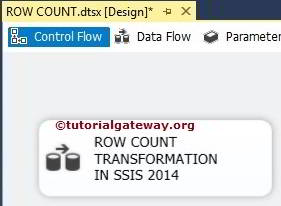
STEP 2: This transformation stores counted rows information in a variable only, so before using this transformation, we need to create a variable on the Variables tab and add an integer variable to the package.
Right-click on the SSIS Control Flow region to open the context menu with multiple options. Select the Variables option from the context menu to create a variable.
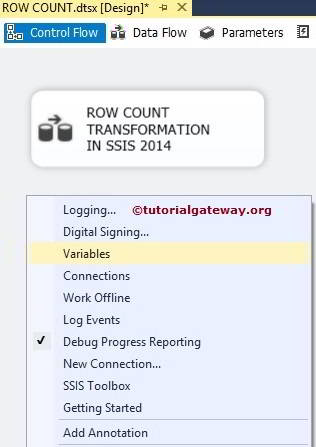
In this case, we’ve chosen to add a variable named NumberOfRows of integer type and assign a value of 0.
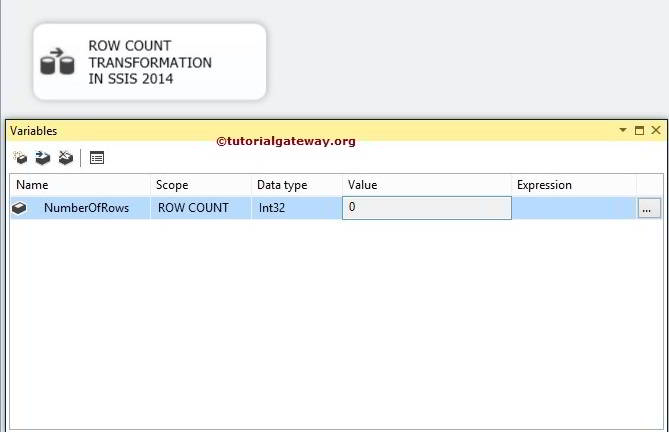
Double click on the data flow task to open the data flow tab. For more Transformations >> Click Here.
STEP 3: Drag and drop OLE DB Source, Row Count Transformation from the SSIS toolbox to the data flow region
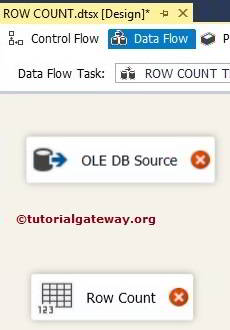
STEP 4: Double click on the OLE DB source in the data flow region. It will open the connection manager settings and provide space to write our SQL statement.
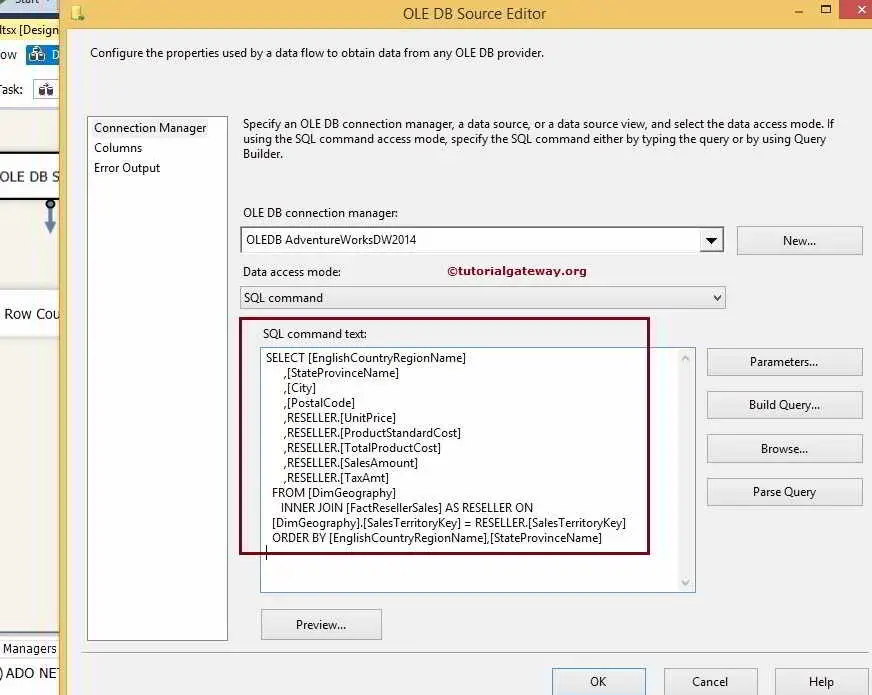
SQL Command we used in the above figure
USE AdventureWorksDW2014
GO
SELECT [EnglishCountryRegionName]
,[StateProvinceName]
,[City]
,[PostalCode]
,RESELLER.[UnitPrice]
,RESELLER.[ProductStandardCost]
,RESELLER.[TotalProductCost]
,RESELLER.[SalesAmount]
,RESELLER.[TaxAmt]
FROM [DimGeography]
INNER JOIN [FactResellerSales] AS RESELLER ON
[DimGeography].[SalesTerritoryKey] = RESELLER.[SalesTerritoryKey]
ORDER BY [EnglishCountryRegionName],[StateProvinceName]
STEP 5: Click on the columns tab to verify the columns. In this tab, we can uncheck the unwanted columns also.
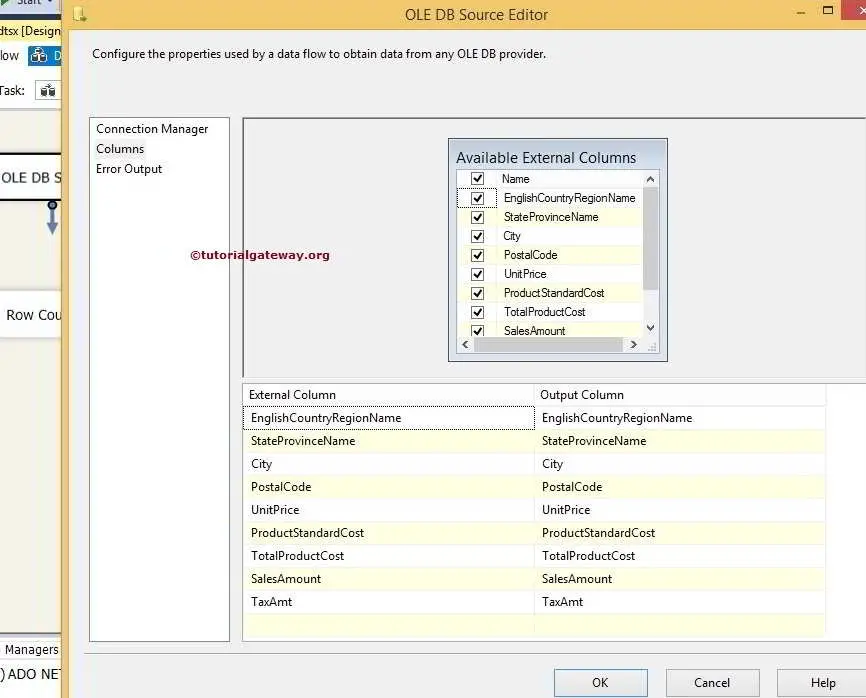
Click ok
STEP 6: The final step is to configure the Row Count transformation. Double click on the SSIS Row Count Transformation will open a small Row Count Window to select the User-defined Variable from the drop-down. Here, we are choosing the already created variable (NumberOfRows).
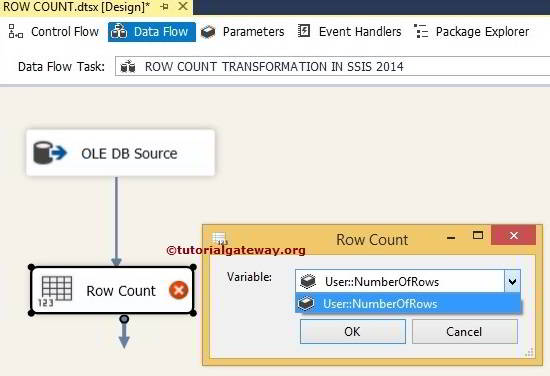
Or you can configure the SSIS Row Count Transformation with a more traditional approach. Right-click on the Row Count Transformation, which will open the context menu with multiple options. Here, select the Show Advanced Editor option from it.
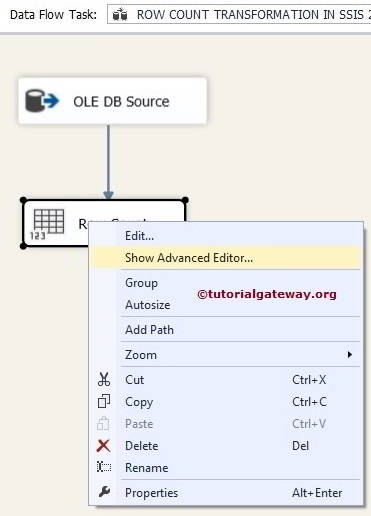
It opens the Advanced Editor of the SSIS Row Count Transformation. Within the Component Properties tab, choose the VariableName property of the Row Count Editor, shown in Figure below, and associate the variable we created before (NumberOfRows)
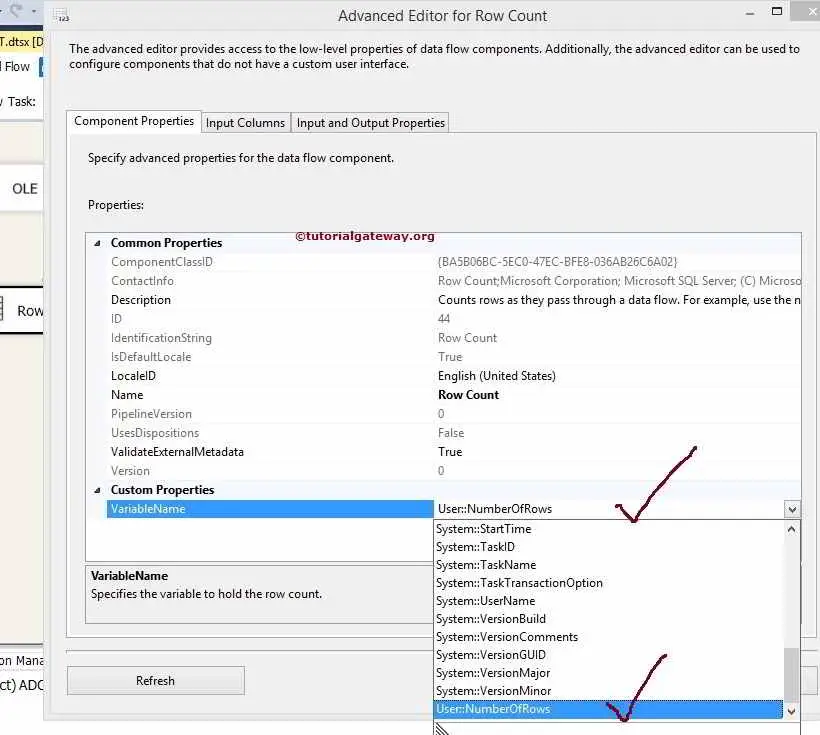
STEP 7: Go to the Control flow region and Drag and drop the Script Task from the toolbox to the Control Flow Region. Next, double-click on it to configure.
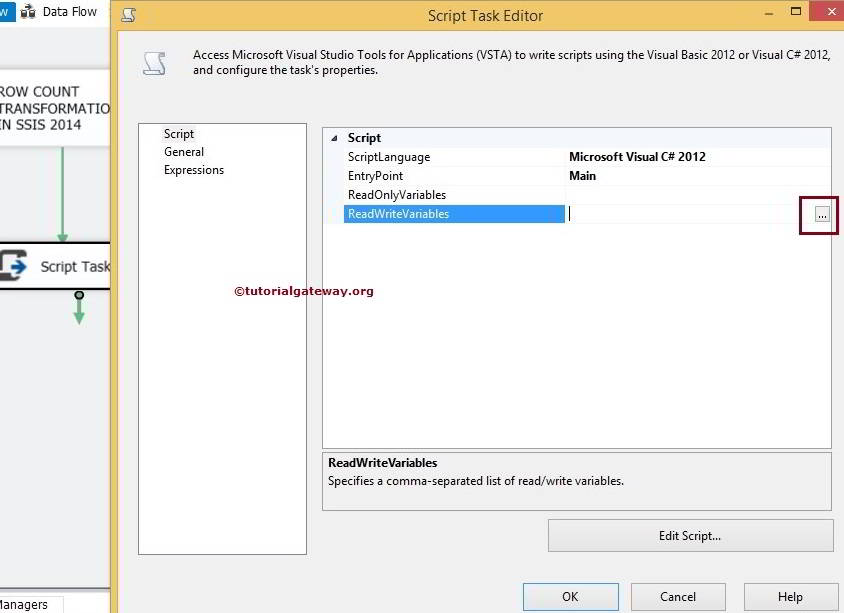
STEP 8: Select the user-defined variable as a read-write variable
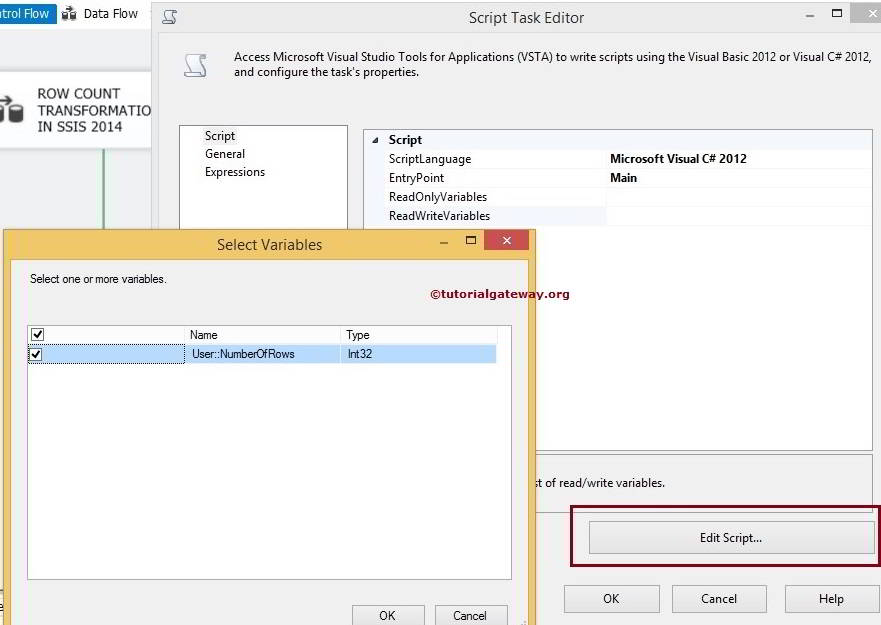
STEP 9: Click ok and then click on the Edit Script button to open the class file
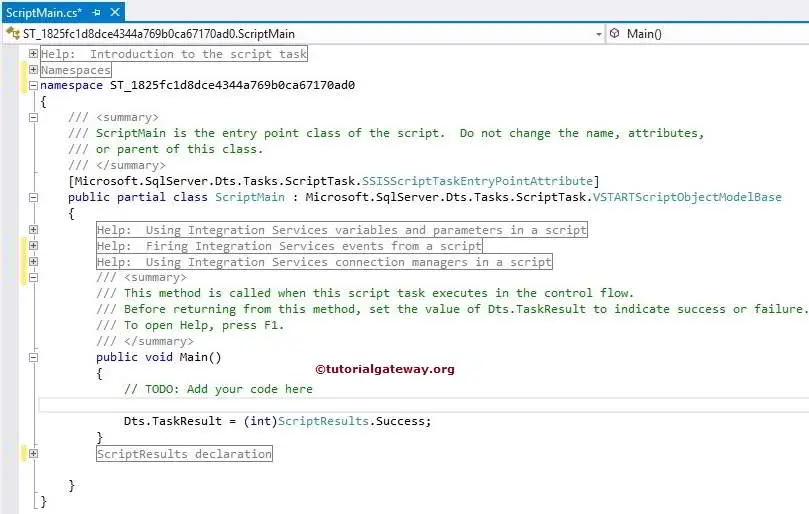
Type the following lines of code in the Main method
String Message = Dts.Variables["User::NumberOFRows"].Value.ToString(); MessageBox.Show(Message);
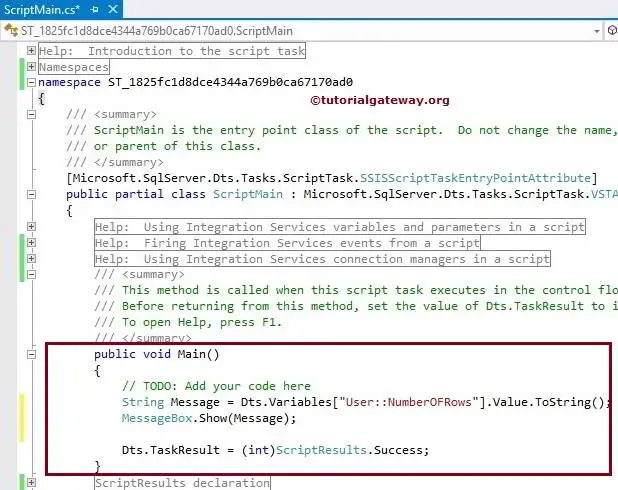
NOTE: I used the C# programming language code here, and I am sorry for VB.Net people. I hope you can understand this code.
Close the class file, and Let’s run the SSIS Row Count Transformation package. From the screenshot below, you can observe that it is displaying the Message Box with the Number of Rows information.
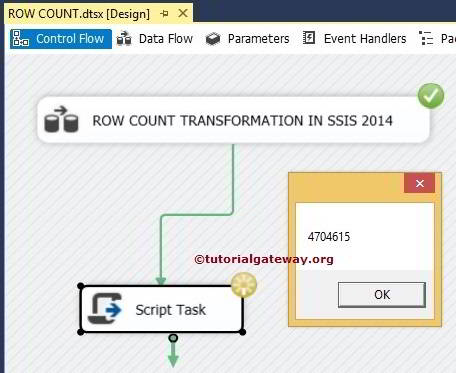
Let us see the data Flow region and whether the SSIS Row Count transformation is giving the correct Result or not.
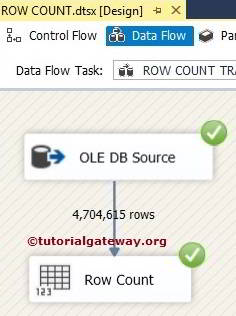
Remember, Until you click the ok button, the Script task will be in running mode. Once you close the Message Box, then the Green Tick Mark will be shown.
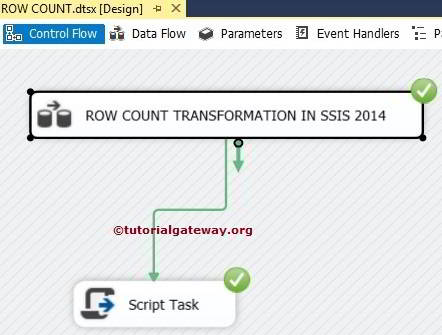
You can observe the message box displaying the number of rows passed through that transformation.
NOTE: This SSIS Row Count transformation has one input and one output. It does not support an error output.
